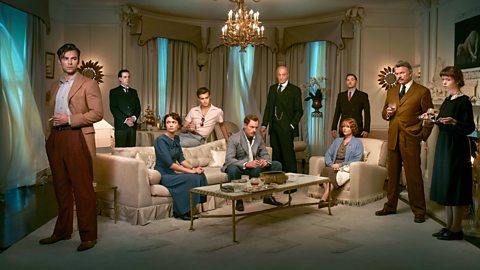The holidays are often referred to as the ‘season of
believing’. As we grow older, however, the pressures of daily life and stresses
of the holidays can make us forget the magic that once made the season so
bright. In the 2003 holiday hit Elf,
one jaded family rediscovers the Christmas spirit with the help of a new
addition from the North Pole. Through the misadventures of ever optimistic elf
Buddy, the film reminds us all that you’re never too old for Christmas cheer
and that the greatest magic lies not at the North Pole but in the depths of the
human heart.
The story begins with Santa visiting an orphanage
during his annual around the world deliveries. When he returns to the North
Pole, he is stunned to learn that one of the infants from the orphanage stowed
away in his sack of toys. The child, dubbed Buddy, is then adopted and raised
by a family of elves. Although he enthusiastically devotes himself to life as
an elf, he never quite fits in with his adopted family. When he reaches
adulthood he is shocked to learn of his true origins, and mortified when Santa
informs him that his biological father is a cynical publisher who has earned a
spot on the Naughty List. Determined to find his place in the human world,
Buddy sets off for New York City to find his long-lost father and finds himself
in plenty of hijinks along the way. Although his arrival in the Big Apple is a
matter of culture shock for the cheery elf and those around him, Buddy’s goofy
charm and child-like wonder eventually win over even his most cynical critics
as he brings a touch of the North Pole to New York.
Through its wonderfully whimsical fish-out-of-water
story, the film reminds us all of the magic of Christmas, while imparting
lessons in tolerance and acceptance that will resonate throughout the year.
Caught between his biological heritage and the culture he was raised in, Buddy
finds himself unable to fit into either human or elf society. While both Santa’s
elves and Buddy’s family in New York see his uniqueness as a burden, it is
ultimately his ability to bridge New York and the North Pole that enables him
to save Christmas. Much like his similarly misunderstood predecessor, Rudolph,
Buddy serves as a positive role model by inspiring viewers to embrace who they
are and highlighting the value of standing out, even as society demands that you
fit in. Throughout his struggles to find his way in New York Buddy is aided by the
kindness of his new family and co-workers, who in turn find themselves learning
to see the world for the magical place that it could be. Through its emphasis upon
everyday acts of kindness the film highlights the true meaning of Christmas and
reminds us all that is the people around the tree rather than the presents
under it that matter most.
The film casts a spell of holiday magic through the charm
of tis cast. Bob Newhart infuses his role as Papa Elf with his signature dry
wit, and serves as an ideal guide through the story’s zany adventures. Ed Asner
captures all the jolliness and warmth of St. Nick in his role as Santa. Daniel
Tay is believable and engaging as Buddy’s step brother, Michael. Mary
Steenburgen conveys an essential sensitivity in her portrayal of the struggles
of Buddy’s put-upon stepmother, Emily. Zooey Deschanel is a dead-pan delight in
her role as Buddy’s co-worker turned love interest, Jovie. James Caan hits all
the right notes in his turn as Buddy’s workaholic father, Walter, as he evolves
from cold businessman to loving family man. In spite of its excellent cast, the
film belongs to Will Ferrell, who inhabits the childlike Buddy with an
enthusiasm that is nothing short of infectious.
As a heartwarming adventure that the whole family can
enjoy, Elf has earned its status as a
modern Christmas classic. The film’s by turns slapstick and sentimental script
combined with the charms of its all-star cast make Elf a holiday film that will keep viewers coming back year after
year. For a guaranteed holly jolly time join Buddy for a journey through the
seven levels of the candy cane forest, through the sea of swirly twirly gum
drops and through the Lincoln Tunnel for an adventure that you won’t soon
forget.


















